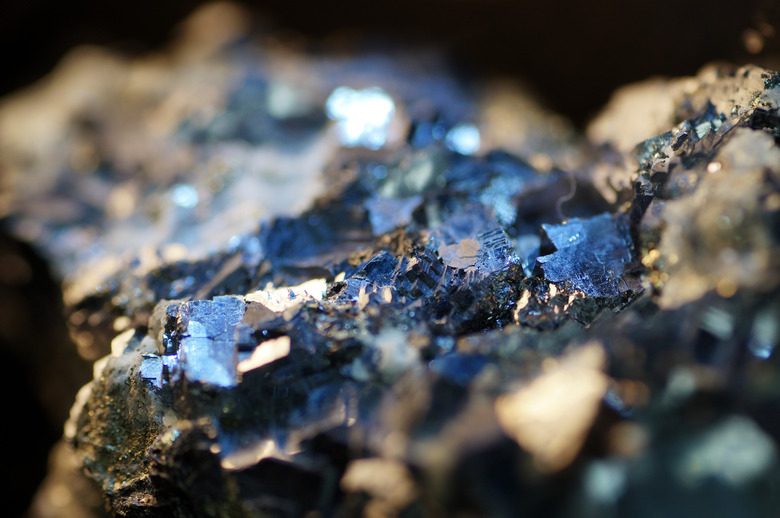The Difference Between Silicate & Non-Silicate Minerals
Many different kinds of minerals exist. They can, however, be divided into two broad classes, the silicate and non-silicate minerals. The silicates are more abundant, although non-silicates are very common as well. Not only do the two exhibit differences in their composition but also in their structure. The structure of silicates tends to be more complex, while the structure of non-silicates features a great deal of variability.
Silicate Minerals
Silicate Minerals
Silicate minerals all contain silicon and oxygen — the two most abundant elements in the Earth's crust. Silicates are by far the more abundant of the two groups of minerals, comprising some 75 percent of all known minerals and 40 percent of the most common minerals. Virtually all igneous rocks are made from silicate minerals; most metamorphic and many sedimentary rocks are made from silicates as well. They can be subdivided into smaller groups on the basis of their structure.
Composition of Silicates
Composition of Silicates
Silicates are divided into different groups based on their structure. The first of these is the neosilicates, which are formed from atoms arranged in four-sided shapes called tetrahedra, with four oxygens on each unit that can connect with atoms arranged in other shapes containing positively charged ions (cations) like aluminum or potassium. Sorosilicates have units of two tetrahedra that share one oxygen atom, while cyclosilicates have rings of tetrahedra, each tetrahedron sharing two oxygen atoms with its neighbors. Cations can become trapped in the center of these rings. Inosilicates have continuous chains of tetrahedral units, each of which shares two oxygens with its neighbors. Phyllosilicates have sheets of tetrahdra, each of them sharing three oxygens with immediate neighbors; the sheets are separated by other groups and arrangements, and cations can be trapped in the spaces between tetrahedra. Finally, tectosilicates have a continuous framework of tetrahedra, each sharing all four oxygen atoms with its neighbors.
Non-Silicates
Non-Silicates
Non-silicates are minerals that do not include the silicon-oxygen units characteristic of silicates. They may contain oxygen, but not in combination with silicon. Their structure tends to be more variable and less complex than that of the silicates, although they too can be subdivided into different classes based on their composition. Sulfates, for example, include the sulfate anion, SO4 with a minus 2 charge, while oxides include oxygen in partnership with a metal like aluminum. Many of the non-silicates are economically important, especially those that include valuable metals.
Examples
Examples
Common examples of silicate minerals include quartz, olivines and garnet minerals. Quartz is especially common; sand, for example, is composed primarily of quartz. One abundant non-silicate mineral is pyrite, or "fool's gold," a compound of iron and sulfur well known for its deceptive metallic luster. Others include calcite, from which limestone and marble are formed, hematite, corundum, gypsum and magnetite, an iron oxide famed for its magnetic properties.
Cite This Article
MLA
Brennan, John. "The Difference Between Silicate & Non-Silicate Minerals" sciencing.com, https://www.sciencing.com/difference-between-silicate-nonsilicate-minerals-8318493/. 13 March 2018.
APA
Brennan, John. (2018, March 13). The Difference Between Silicate & Non-Silicate Minerals. sciencing.com. Retrieved from https://www.sciencing.com/difference-between-silicate-nonsilicate-minerals-8318493/
Chicago
Brennan, John. The Difference Between Silicate & Non-Silicate Minerals last modified March 24, 2022. https://www.sciencing.com/difference-between-silicate-nonsilicate-minerals-8318493/
